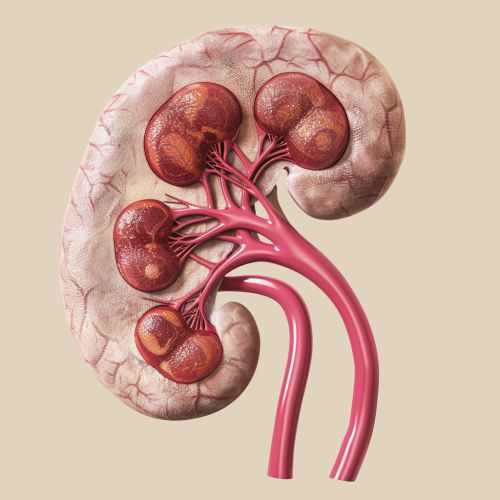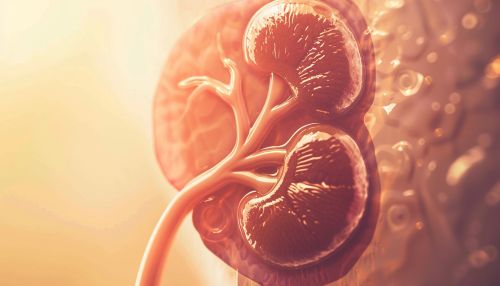Uremia
Introduction
Uremia is a clinical condition associated with the accumulation of urea and other nitrogenous waste products in the blood, which are normally excreted by the kidneys. This condition typically arises in the context of chronic kidney disease (CKD) or acute kidney injury (AKI), leading to a decline in renal function. Uremia is characterized by a constellation of symptoms and biochemical abnormalities that can affect multiple organ systems. This article delves into the pathophysiology, clinical manifestations, diagnosis, and management of uremia, providing a comprehensive overview for healthcare professionals and students.
Pathophysiology
Uremia results from the kidneys' inability to filter and excrete waste products effectively. The primary waste product involved is urea, a byproduct of protein metabolism. However, other substances such as creatinine, guanidines, phenols, and middle molecules also accumulate. The pathophysiological mechanisms underlying uremia include:
- **Retention of Waste Products:** The accumulation of urea and other nitrogenous wastes leads to toxic effects on various tissues.
- **Electrolyte Imbalance:** Impaired kidney function disrupts the balance of electrolytes such as sodium, potassium, calcium, and phosphate.
- **Acid-Base Disturbances:** The kidneys' inability to excrete hydrogen ions and reabsorb bicarbonate results in metabolic acidosis.
- **Hormonal Dysregulation:** The kidneys play a crucial role in the regulation of hormones such as erythropoietin and renin, leading to anemia and hypertension.
Clinical Manifestations
The clinical presentation of uremia is diverse and can affect multiple organ systems. Symptoms and signs include:
- **Neurological Symptoms:** Encephalopathy, characterized by confusion, lethargy, seizures, and coma, is a hallmark of severe uremia. Peripheral neuropathy and restless legs syndrome are also common.
- **Cardiovascular Symptoms:** Hypertension, pericarditis, and heart failure are frequent cardiovascular complications. Uremic pericarditis presents with chest pain and a pericardial friction rub.
- **Gastrointestinal Symptoms:** Anorexia, nausea, vomiting, and gastrointestinal bleeding are common. Uremic fetor, a distinctive ammonia-like odor of the breath, is also noted.
- **Hematological Symptoms:** Anemia due to decreased erythropoietin production and platelet dysfunction leading to bleeding tendencies are significant hematological issues.
- **Dermatological Symptoms:** Pruritus, uremic frost (crystallized urea deposits on the skin), and hyperpigmentation are observed.
- **Musculoskeletal Symptoms:** Renal osteodystrophy, characterized by bone pain and fractures, results from disturbances in calcium and phosphate metabolism.
Diagnosis
The diagnosis of uremia is based on clinical evaluation and laboratory investigations. Key diagnostic steps include:
- **History and Physical Examination:** A thorough history and physical examination are essential to identify symptoms and signs of uremia.
- **Laboratory Tests:** Blood tests reveal elevated levels of urea, creatinine, and other nitrogenous waste products. Electrolyte imbalances, metabolic acidosis, and anemia are also detected.
- **Imaging Studies:** Renal ultrasound and other imaging modalities help assess kidney size, structure, and any obstructive pathology.
- **Renal Biopsy:** In selected cases, a renal biopsy may be performed to determine the underlying cause of kidney dysfunction.
Management
The management of uremia involves addressing the underlying cause, alleviating symptoms, and preventing complications. Key management strategies include:
- **Dialysis:** Hemodialysis and peritoneal dialysis are the mainstays of treatment for severe uremia. Dialysis helps remove waste products and correct electrolyte imbalances.
- **Medications:** Pharmacological interventions include erythropoiesis-stimulating agents for anemia, phosphate binders, and vitamin D analogs for renal osteodystrophy, and antihypertensive agents for blood pressure control.
- **Dietary Modifications:** A low-protein diet helps reduce the production of nitrogenous waste products. Fluid and electrolyte restrictions are also recommended.
- **Transplantation:** Kidney transplantation is the definitive treatment for end-stage renal disease (ESRD) and can resolve uremia.
Prognosis
The prognosis of uremia depends on the underlying cause and the effectiveness of treatment. Early diagnosis and appropriate management can improve outcomes. However, untreated or inadequately managed uremia can lead to severe complications and increased mortality.
See Also


